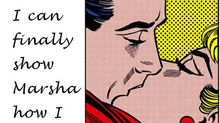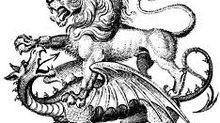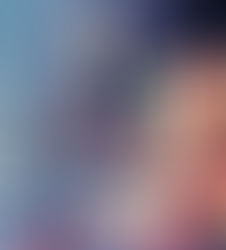Frame-up: Using Sequential Framing to Teach Multimodal Writing
- lastcathar
- Feb 21, 2015
- 11 min read
In the evolution of written communication, conventions come and go, riding on the back of the available technology of the time and culture. Traditionally, composition students have learned the craft by studying and to some extent imitating the great writers of preceding eras. Technological advances were slow to come and not particularly radical in nature so, materially, composition remained a matter of words on paper. Whether with quill or printing press or typewriter, composition meant choosing words.

The Internet Age presents us with a radical change. Composition can now be something very different, and much more visual. Images, film clips, music, and interactive content of all kinds can be part of a digital document as easily, now, as a word, and shared with the entire world almost instantly. This means composition, now, is about other features, making the right choices about more than just the right words.
Advances in technology have given composition teachers possibilities faster than our institutional culture has been able to assimilate them and integrate them into those old traditional statutes of literary imitation. What are the rules when anything is possible? Who are the greats, the guiding literary lights, when so little time has elapsed in which to establish a new canon and new, multimodal examples for our students to study? Gatsby is an example of brilliant writing, and in this respect, if words alone were the only literary tools available, worthy of imitation to this day. But what would Fitzgerald have done if he had worked in a digital environment? How would he have described Daisy if, for example, he’d been able to insert a few emoticons into his manuscript?
A growing gap exists between old literacy instruction and the new literacies. Technology, after all, only gives us a wider range of surface features to choose from; it does not change the nature of human understanding, nor does it in itself improve the quality of human expression, though it has certainly increased its quantity.
Multimodal literacy offers an opportunity to enrich literature. It is important that we find a way to instill in our students a critical, evaluative habit of mind that looks deeper and expects more than just a lot of surface features. This is the real gap. Old literacy instruction knew what to look for in literature, while new literacy seems to be too much about quantity, not enough about quality. Comics offer composition teachers a way of bridging this gap.

This short comic from the New York Times Magazine on May 22, 2014 appeared in an article about Post Traumatic Stress Disorder. The sketches by Matthew Woodson and text by Jeneen Interlandi work together to visualize and clarify the events described in the article.
Many of our assumptions about composition are based on the conception of writing as words on a page…that is, ink on paper. Everything else, from skywriting to cloud storing, is treated as a sort of newfangled stand-in for this time-honored traditional image. This assumption tends to bring baggage with it: some things simply are not done, are not even considered, entirely because they have, until recently, been inconceivable. The way to change this retro attitude is to replace the page, the age-old mental image of a piece of paper waiting for a drop of ink, with a new paradigm, one that is amenable to a wide range of expressive media.

Storyboard from the movie Children of Men (2007)
In the theater, we suspend our own senses in order to become absorbed in the movie. Storyboards provided guidance for the camera. The camera is our eyes, once removed, you might say. We absorb the storyboard artist’s vision…twice removed, and the original, textual, screenplay is a very distant cousin of what finally is perceived as we mindlessly stare at the screen and chew our popcorn.
Artist: Martin Asbury
We need to leave the page behind. The new paradigm we must embrace if we are to effectively make use of the possibilities offered by the digital writing environment is, obviously, the screen. The tool I suggest we use to bridge the gap is the comic, and the way to bring about all of the above is to replace the paragraph with the “frame.”
The Oxford Dictionary online defines a paragraph as “A distinct section of a piece of writing, usually dealing with a single theme and indicated by a new line, indentation, or numbering.”
Among the tools writers use to compose text, the paragraph holds an important place. It is a set of conventionally accepted visible markers that function as an organizational tool within a larger text. It is a container, a sort of enclosure within which a single idea is developed, explored, and expressed. The paragraph visually locates an idea, separating it from the sea of material around it. Writing is taught as a process of arranging ideas so that the author builds a chain of logic, stacking paragraphs on a page like a totem pole. If the reasoning is sound, the paragraphs form a breadcrumb-trail of information that will lead the reader to the conclusion of the argument, the solution to the mystery, or the happy ending of the story.

A segment from Persepolis by Marjane Satrapi
Compare this organizational tool to the panels of comics. Each panel establishes one portion of the plot progression, each plot-step sequentially advancing the plot and preparing for the information to be delivered in the next panel. Each panel is, in this sense, equivalent in function to a paragraph. But the contents of a comic panel are flexible: It can be just text, or it might be only images, or a mix. When teaching multimodal composition, comics can be used as an ideal example of clearly defined and sequentially arranged containers (like paragraphs) that present the pieces of the larger idea being developed, explored, or expressed, but (unlike paragraphs) not limited to textual content or a stacked layout.
In the college classroom, teaching the writing process not as one of filling and stacking paragraphs, but as a process of composing and arranging both the content and the look of a document can have a freeing effect, breaking old habits of thought and encouraging students to explore the increasingly visual nature of composition in the still-largely-unexplored outer reaches of our digital frontier. The frame is a comfortably small conceptual step from what students have learned in high school about writing paragraphs, but it can be a giant leap toward embracing multimodality.
This is not all that new. The concept, if not the word itself, has already established itself solidly in many arenas of communication. Think of comics. Each panel expresses a piece of the story. Or movies, where filming is based on storyboards, the sketched panels that show the cameraman how each shot should be framed. Frames are the daily tools of visual communication. Presenting composition as a process of framing content embraces the full range of expressive possibilities. It makes the document a multimodal entity rather than a strictly textual one.

Early in the semester, an assignment introducing the concept of framing and page layout. Students must tell the story of their lives with as much honesty and accuracy as their instructor has modeled in the example shown here.
A frame is “a container, a sort of enclosure within which a single idea is developed, explored, and expressed,” the same definition I gave, above, for the paragraph. Conceiving of a document as an arrangement of framed informational elements that build toward the larger message, does not change the way we create our texts or how we understand them. Instead, it takes the modern paragraph and expands it conceptually, broadens its content and layout possibilities while retaining its organizational function within a text. In a modern document, a frame might “develop, explore, or express an idea” in the form of a photograph, a video, a block of text, a chart, or a drawing, each selected by matching the medium to the message, choosing the best way of communicating that particular idea, that particular chunk of the larger idea.

An example of a digital document, intended to be turned in as a page on students’ course websites. Text, diagram, illustration, the poem itself, and an assortment of links to additional resources all are arranged as a series of blocks or frames. The layout is meant to be visually interesting, and also to deliver chunks of information in an order that will flow naturally for the reader.
For those who are composing in the digital environment, Marshall McLuhan’s idea that the “medium is the message” is a reminder: the multimodal writer has to be aware of the baggage that comes with any medium, its strengths and weaknesses. We should be able to select an appropriate medium with the same fluid skill as the mechanic under your car demonstrates when choosing the right tool for the job. Your mechanic knows the problem and knows which tool (wrench, screwdriver, junk yard) will do what your car needs. The mechanic chooses the best medium for the message, you might say.

Modern communication technology is a big toolbox. If we can adapt to reality and stop approaching computers as if they were only a stand-in for parchment-and-quill, all media can be seen as equal-opportunity alternatives, each with its own strengths and weaknesses.
When art, science, and literature run together on our pages, how are we to teach composition? What are the rules when anything is possible? What constitutes great work when technology puts all of our former shining examples into a box marked “ARCHIVE”? How, in a culture that is drunk on quantity, and using tools that are designed for glitz and bling, do we imbue our students with a taste for quality?

Technology makes a difference. Lakota pictograph on buffalo hide.
If a storyteller has to mix blood and yak milk to make paints, and then skin the yak to get a canvas, that storyteller is likely to be very circumspect in the use of pictures. The images here, in a style called Ledger Art, record important moments in a memorable battle. Since there is no progressive sequencing of these episodes, this is essentially a collection of individual illustrations rather than a narrative.
But, where to begin? How do you start a new class down this relatively new path? How do you introduce the idea of "writing" with visual images?

I call this an "Idea Map." It is a progressive, narrative series of images that track an idea in terms of its visual representation. The critical thinking involved in laying the images out for clarity, and choosing a few words to help pull it all together, is an excellent active-learning way of laying groundwork for bigger and more varied projects to come.
The huge increase in the available expressive tools and choices, along with the dizzying array of software needed to edit these different media, can overwhelm students with possibilities. The ink-on-paper paradigm has not prepared them for thinking about spatial layout, color selection, or font choice, let alone choosing and editing images, making films, recording narration, or designing interactive features, all of which, when composing in a digital environment, are as easily inserted as text, and can add depth and richness to information or expression. Like all progress, this comes at the cost of complexity.
Composing a document that might include visual elements is not the same ball game as just choosing the right words. It is like learning a new language. Our students will become creators of multimodal narrative, makers of content, when they can think in the new language, think in rhetorical terms about the increasing range of visual and textual elements they have available to choose from.

Crete. The Minoan culture. You are looking at an early attempt at sequential illustration, depicting the ancient sport of “bull leaping.” In a single image, the artist shows three stages of the successful “leap:” First, the athlete must grab a charging bull by its horns. When the bull rears its ugly head, the athlete is flipped up and over —in this example performing a handspring on the bull’s back—and lands safely behind the beast.
This may be the world’s oldest surviving comic.
The first truth of teaching visual rhetoric is this: Since the product is to be visual, the lessons should be eye candy. Like the sport of bull leaping, talking about it will not really convey how it is done. Lessons need to include lots of visuals in a wide variety of formats so that students can begin to gradually develop in their own minds an understanding of what works and how it works, to develop, ultimately, their own compositional style.

An image can often convey the rich complexity of reality more adeptly than can a page of text. Photographs are certainly realistic, but a photograph’s richness and complexity can sometimes distract from the intended take-home meaning, while a drawing or painting can be precisely designed to produce a specific desired effect. Choose the right tool for the job.
The truth is that art, like writing, is something that many students do not feel confident about. These students will at first be hesitant to display their lack of artistic skill and face assured total derision from their classmates. But that is no problem. Drawing and painting are not the only ways to tell a story visually. In a digital environment, the underlying concepts of visual rhetoric can be taught more simply by starting with an image search.
Start small. Learning to effectively use the vast array of communication tools that are available requires students to follow something like the same evolutionary progression that human beings went through in the development of self-expression. This does not mean your students have to paint caves or skin yaks, exactly, but it is best for them to begin with the very basics of visual rhetoric, recognizing and appreciating the visual aspects of language before they start trying to manipulate them.
Small, in terms of visual rhetoric, means uncomplicated. Rather than start with comic strips, use single-frame expressions to show how words and images can work together to create meaning.

An image from the recent Syrian conflict, with a quote by Einstein added by the author. Famous quotes are a reasonable place to start. Give your students a quote and ask, what do you see when you read this quote? What image would work well with this idea?
Photo by Kahlil Ashiwari
Image selection serves as a bridge, a scaffold that builds on students’ extensive experience as consumers of visual content. As they search, thinking critically about the images they sort through, they are developing the skills needed to make meaning using visual content. All their lives they have seen advertisements, news reports, TV and movies; they have more experience, know more about this way of communicating, than they are aware of. It is not an easy task, choosing the right image, combining it with the right words to achieve a synergy of meaning, not easily described or taught either. It is hard to define the nuanced impressions an image can generate. So don’t try to describe it or define it…just use lots of examples. Let them see it, and let them feel free to play around with it. Expose students continuously to a wide range of examples that incorporate both visual and textual content. Talk them through the choices that the author or designer has made. Point out the strengths and weaknesses of various design options. Then leave them entirely free to choose. Let them try it, make mistakes even. Too many expectations and requirements and rules only serve to choke the imagination, and composition is all about imagining, seeing what is not objectively there, and making others see it too.
This kind of challenge is not what students expect when they walk into a college comp class, but the unexpected is itself a teaching tool. Active, student-centered, problem-based teaching is a powerful approach exactly because it pops students out of their old habits and makes them dig for answers to their new questions. Learning should not be treated as a job, and students should not be judged by their products. It is a process, and if the teacher can encourage enough engagement it can become a lifelong process of growth. Comics can open the doors of this process.

Works Cited
Asbury, Martin. Storyboard for the movie Children of Men. Dir. Alfonso Cuaron. Universal, 2007. <http://www.martinasbury.com/sb_com12.html>
Ashiwari, Kahlil. A member of the Free Syrian Army sits on a sofa in the middle of a debris-strewn street in Deir al-Zor, Syria, on April 2, 2013. The Atlantic. Photograph. 25 July 2014. Web. <http://www.theatlantic.com/infocus/2013/04/syria-in-ruins/100488/>
Eliot, John. Overachievement: The New Model for Exceptional Performance. New York: Portfolio, 2004. Print.
Satrapi, Marjane. The Complete Persepolis. New York: Pantheon Books, 2007. Print.
Stearns, Junius Brutus. Washington Constitutional Convention 1787. Virginia Museum of Fine Arts. Wikimedia Commons. Wikimedia Foundation. Web. 27 July 2014. <http://commons.wikimedia.org/wiki/File:Washington_Constitutional_Convention_1787.jpg>
“Unforgettable Fire: Drawings by Atomic Bomb Survivors, 1977.” Internet Archive. N.d. Web. 31 July 2014. <https://archive.org/stream/UnforgettableFireDrawingsByAtomicBombSurvivors1967/UnforgettableFire-DrawingsByAtomicBombSurvivors1967#page/n69/mode/2up>
Woodson, Matthew and Jeneen Interlandi. A Revolutionary Approach to Treating PTSD. Illustrations. New York Times Magazine 22 May 2014. Web. 28 July 2014. <http://www.nytimes.com/2014/05/25/magazine/a-revolutionary-approach-to-treating-ptsd.html>





























Comments